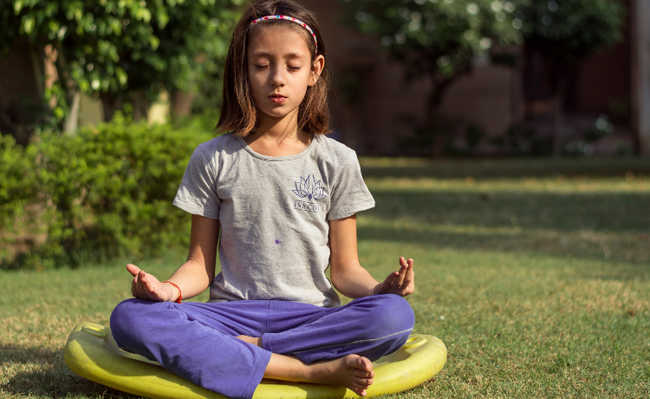Children's Meditation: Five Techniques for Children
Children's meditation can help with concentration and ease children's stress and hyperactivity

Edited and resized image by Jyotirmoy Gupta, is available on Unsplash
Can't you even imagine those kids who seem plugged in, sitting with their eyes closed and completely still for more than five seconds? Well know that this is possible. Of course it's not overnight. Children's meditation, as well as the practice of adults, is an apprenticeship that requires training. Example is very important when teaching meditation to children.
The benefits of children's meditation are worth it: reduced hyperactivity, improved school performance, more concentration and focus, less stress, nervousness and anxiety.
Deborah Rozman, author of the book Meditation for Children , gives three basic rules to achieve this:
"The first is that the child should not feel obliged to practice it. The second is that the short one should meditate for a short time, just a few minutes. Children are very distracted. The third tip is that every meditation should follow a adult guidance, at least in the beginning."Start with just one minute. Seeing that the children are able to concentrate, gradually increase their practice time.
Some techniques can help children enter the meditative state:
1) Focus on breathing
This meditation technique , based on "mindfulness", it's very simple. Ask the child to sit comfortably and concentrate on the incoming air and the outgoing air. It could be something like: "Close your eyes and focus on the feeling: the air that comes in cold through your nose and fills your chest. Then it comes out, emptying the chest, and passes it warm, coming out of the nose. Air enters. One two Three. Air comes out. One two Three".
Another interesting infant meditation technique is to use a pebble, crystal, or any small, non-flamboyant object on the child's stomach. Ask her to look at the pebble that rises when air enters and falls when air leaves.
2) Focus your gaze on one point
It could be a candle flame, a spinning pinwheel, a pendulum, the smoke of an incense. The intention of this meditation technique is for children to be able to just look at the image for a certain amount of time.
3) Hear the bell
A sound that slowly extends and silences is also a very easy way to teach meditation to children - it helps them to concentrate, especially the little ones. It can be a bell, a guitar string, a violin note, even a drum. Ask them to close their eyes and listen to the sound until it ends and silence appears. Do a number of repetitions that do not tire the children.
4) Repeat words or phrases
Simple repetition, as long as it is not tedious for the child, already leads to a meditative state. It can be simple words like love, health, peace, joy. Or phrases with a beautiful meaning: "I want to become what I am: a child made of light" or "From my heart spring the love and light that fill the world with peace".
5) Mental images
The adult can lead a meditation for children with an easy-to-understand little story, so that the practice of meditation for children will be guided and relaxing. For example: "Lie down and close your eyes. Imagine that you are now a soft rag doll that is sprawled on the floor. Feel your soft feet, legs, belly, hands, arms, shoulders , the neck and the head. Everything is soft and spread out". It could be the water on a beach that wets the feet, legs and arms. It could be a net that swings back and forth. The tone of voice has to be soft. You can also use a background music and a soothing incense to aid in children's meditation.
Learn about a "meditation in a jiffy" technique that can help adults and children begin meditation practice.









